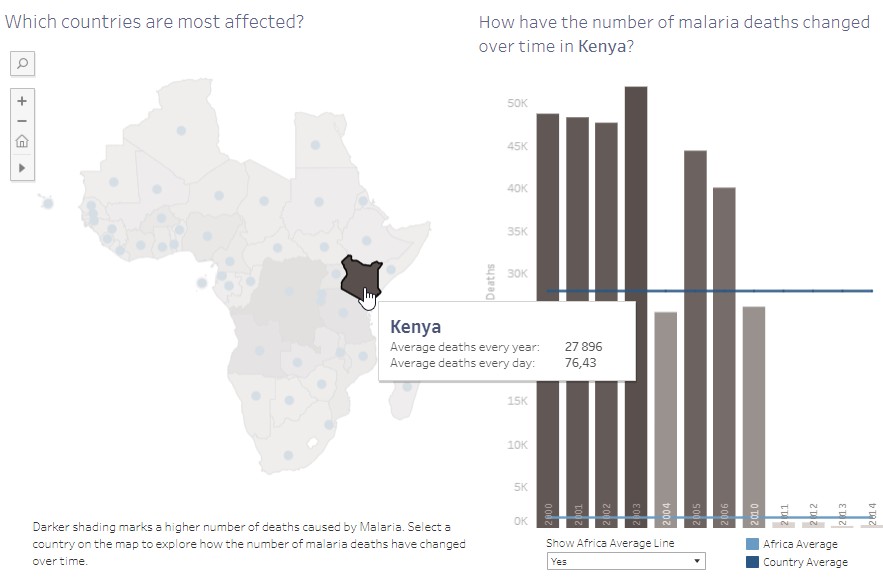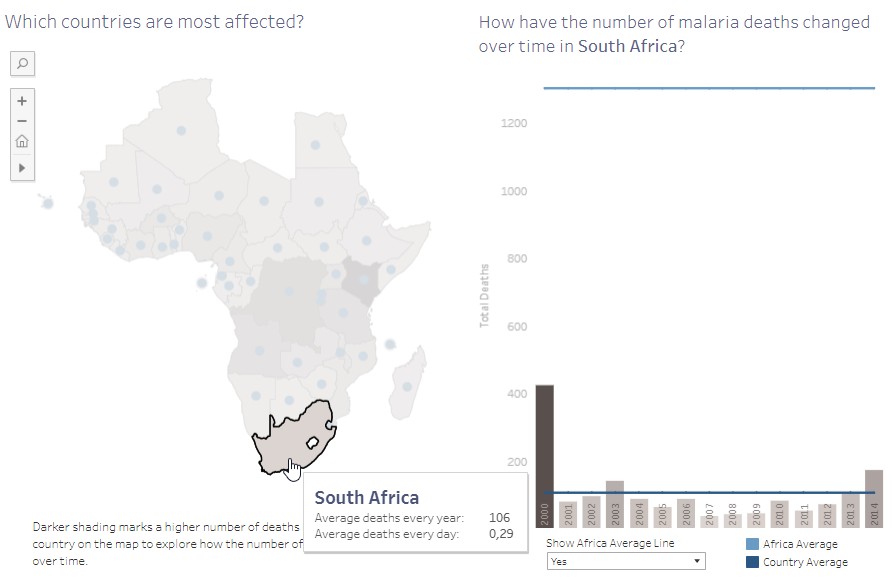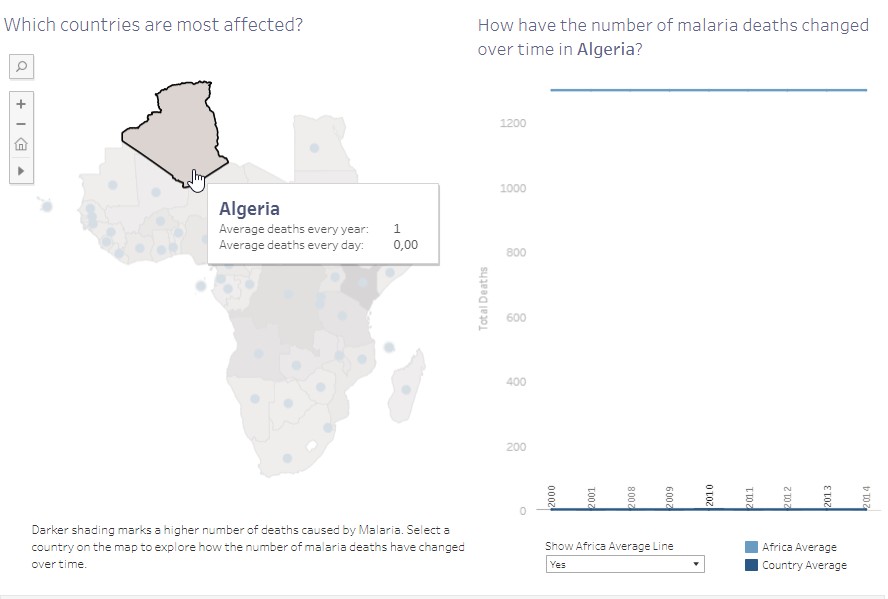
The first screenshot demonstrates that malaria is a severe disease in Africa. In particular, nations from Central Africa are more subject to this illness, and Kenya is a suitable example. The data depict that 27,896 people die from malaria on average. This number is significantly higher when compared to 1,303 deaths that constitute the Africa average. One can suppose that mediocre medicine promotes the disease’s spread. However, it is possible to mention that climatic conditions also contribute to this state of affairs because many neighboring countries have numerous malaria deaths.

The second screenshot depicts that malaria affects South Africa differently. The statistical data demonstrate that the nation manages to cope with the disease successfully because the average number of deaths per year equals 106, which means that 0.29 people die from malaria every day. This figure is significantly lower compared to the Africa average of 1,303 deaths annually. Since the screenshot above indicates that 2000 saw more than 400 cases, one can suppose that a dramatic change happened after this year, which improved the country’s response to the disease. South African medicine might have found a more effective way to treat individuals with malaria.

The third screenshot shows that Algeria is the least affected country when it comes to the spread of malaria in Africa. These statistical data indicate that such a small number of malaria deaths had occurred in the nation from 2000 to 2014 that one person dies from the disease annually. This figure is positive on its own, and it becomes even more promising considering the Africa average. One can explain it by the fact that Algeria has a developed healthcare industry, while its climatic conditions do not promote the disease’s spread.